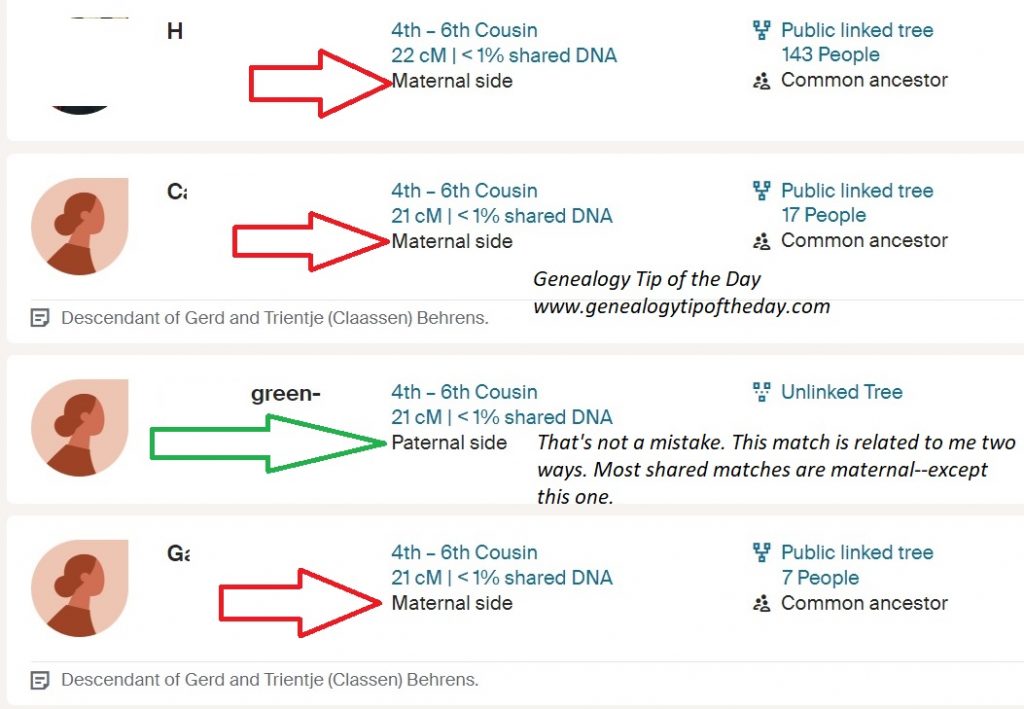I posted this missive about DNA matches and errors and thought it would make for a good tip. If you are on our Facebook page, you may have already seen it. Comments welcome.
Your DNA matches can be used as clues even if their trees are wonky.
I have matches on one branch of my family where a few people have assigned parents for an ancestor that have been disproven and are questionable from a geographic standpoint.
But…they are still my matches. I know how they are related. It’s just that they’ve given my ancestor parents that are not right. I don’t have to use that information–they won’t change it either which is frustrating, but a reality.
I can still see who I have as shared matches with those people.
And my approach if I think someone is wrong about something is to ask what evidence they have of the relationship or statement that I’m questioning. Generally speaking, I don’t make statements if I don’t have some sort of documentation to back it up. My “gut” focuses on eating and digestion, not making genealogical statements–other than statements about which ancestral cuisine I could do without or which ones I like (sauerkraut).
Sometimes it leads to a dialogue and they realize there is an error.
Sometimes they just say “they don’t know” or “it doesn’t matter.” I usually respond with “if you find any evidence, please let me know I’d love to hear about it” and offer to share what I have. I don’t often hear from those people.
Sometimes it turns out that I am wrong and the person has solid and reliable evidence of the statement they made. I’m always willing to admit that, but I need some evidence.
But I’ve taken a gentle approach with most of these errors largely because it’s better on my blood pressure and there are better ways to use my time. I write up what I have found and what my conclusions are. I can’t convince some people that they are wrong. And getting into arguments with genealogists who aren’t necessarily interested in being correct is not a good use of my time. Discussions and disagreements with those who are making a concerted effort trying to figure stuff out is.
Just my 1/50 of a dollar.
Or my 16% of a bit. I think my math is right.
